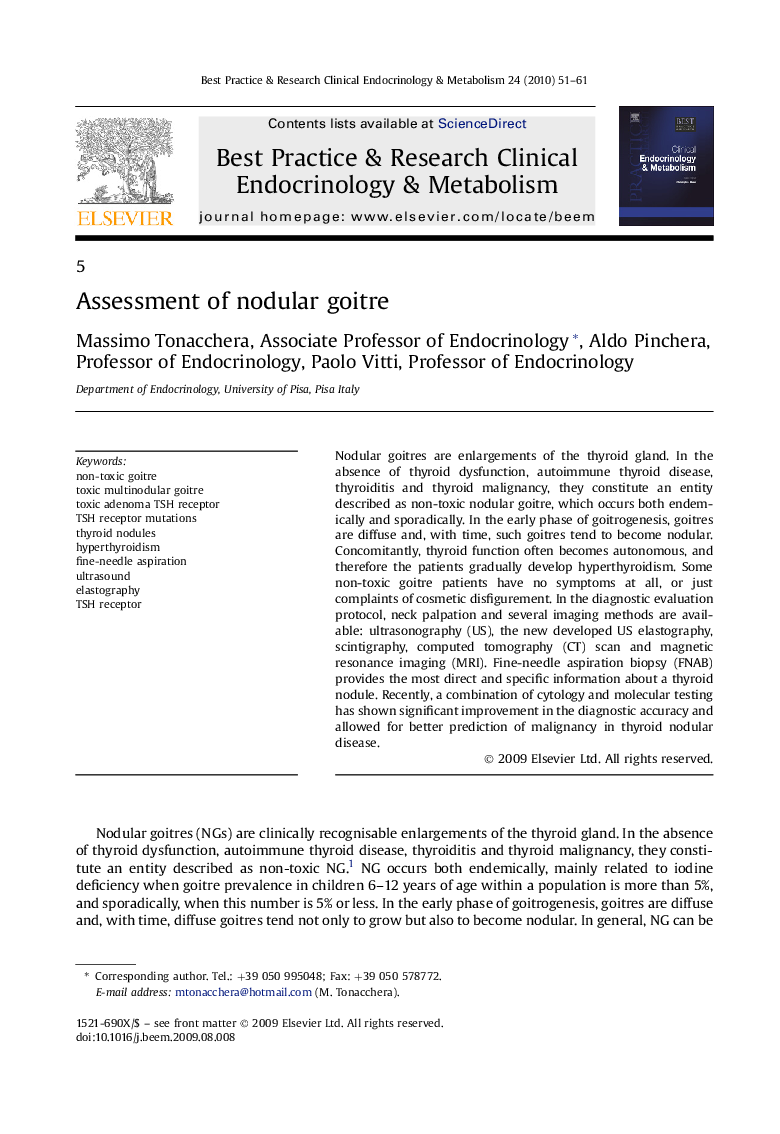| Article ID | Journal | Published Year | Pages | File Type |
|---|---|---|---|---|
| 2791998 | Best Practice & Research Clinical Endocrinology & Metabolism | 2010 | 11 Pages |
Nodular goitres are enlargements of the thyroid gland. In the absence of thyroid dysfunction, autoimmune thyroid disease, thyroiditis and thyroid malignancy, they constitute an entity described as non-toxic nodular goitre, which occurs both endemically and sporadically. In the early phase of goitrogenesis, goitres are diffuse and, with time, such goitres tend to become nodular. Concomitantly, thyroid function often becomes autonomous, and therefore the patients gradually develop hyperthyroidism. Some non-toxic goitre patients have no symptoms at all, or just complaints of cosmetic disfigurement. In the diagnostic evaluation protocol, neck palpation and several imaging methods are available: ultrasonography (US), the new developed US elastography, scintigraphy, computed tomography (CT) scan and magnetic resonance imaging (MRI). Fine-needle aspiration biopsy (FNAB) provides the most direct and specific information about a thyroid nodule. Recently, a combination of cytology and molecular testing has shown significant improvement in the diagnostic accuracy and allowed for better prediction of malignancy in thyroid nodular disease.
